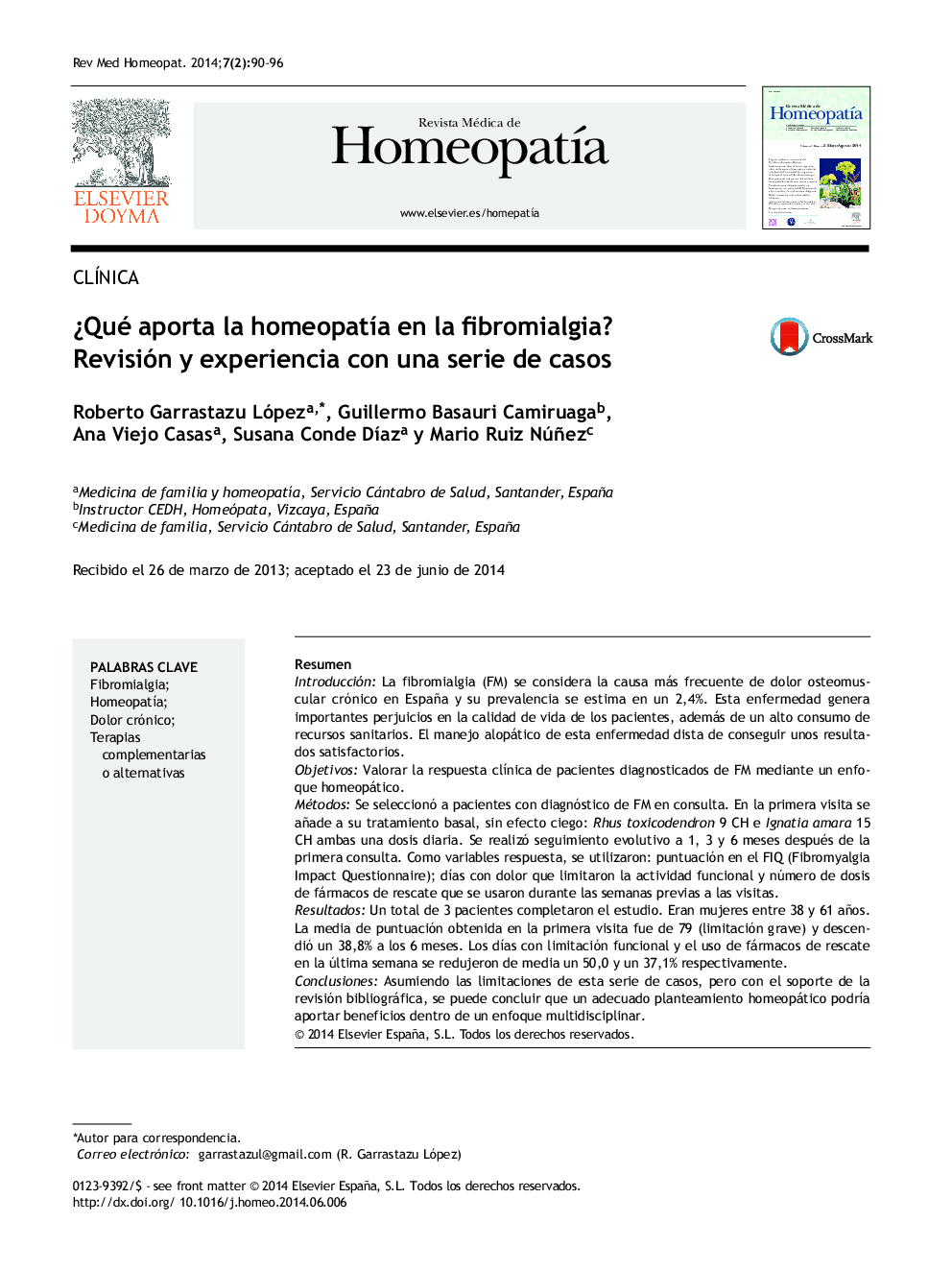| Article ID | Journal | Published Year | Pages | File Type |
|---|---|---|---|---|
| 3102787 | Revista Médica de Homeopatía | 2014 | 7 Pages |
ResumenIntroducción: La fibromialgia (FM) se considera la causa más frecuente de dolor osteomuscular crónico en España y su prevalencia se estima en un 2,4%. Esta enfermedad genera importantes perjuicios en la calidad de vida de los pacientes, además de un alto consumo de recursos sanitarios. El manejo alopático de esta enfermedad dista de conseguir unos resultados satisfactorios.ObjetivosValorar la respuesta clínica de pacientes diagnosticados de FM mediante un enfoque homeopático.MétodosSe seleccionó a pacientes con diagnóstico de FM en consulta. En la primera visita se añade a su tratamiento basal, sin efecto ciego: Rhus toxicodendron 9 CH e Ignatia amara 15 CH ambas una dosis diaria. Se realizó seguimiento evolutivo a 1, 3 y 6 meses después de la primera consulta. Como variables respuesta, se utilizaron: puntuación en el FIQ (Fibromyalgia Impact Questionnaire); días con dolor que limitaron la actividad funcional y número de dosis de fármacos de rescate que se usaron durante las semanas previas a las visitas.ResultadosUn total de 3 pacientes completaron el estudio. Eran mujeres entre 38 y 61 años. La media de puntuación obtenida en la primera visita fue de 79 (limitación grave) y descendió un 38,8% a los 6 meses. Los días con limitación funcional y el uso de fármacos de rescate en la última semana se redujeron de media un 50,0 y un 37,1% respectivamente.ConclusionesAsumiendo las limitaciones de esta serie de casos, pero con el soporte de la revisión bibliográfica, se puede concluir que un adecuado planteamiento homeopático podría aportar beneficios dentro de un enfoque multidisciplinar.
IntroductionFibromyalgia (FM) is considered the most common cause of chronic musculoskeletal pain in Spain. Its estimated prevalence is 2.4%. This condition leads to significant impairment in quality of life of patients and a high consumption of health resources. The allopathic management of this disease is far from achieving satisfactory results.ObjectiveTo evaluate the clinical response of patients diagnosed with FM using a homeopathic approach.MethodsPatients diagnosed with FM in the consulting room were selected. At the first meeting it is added to the baseline treatment, without blind effect: daily doses of Rhus toxicodendron 9 CH and Ignatia amara 15 CH were added to the baseline treatment in the first visit. A follow-up was performed at 1 month, 3 months, and 6 months from the first consultation. The response variables used were, test score on the FIQ (Fibromyalgia Impact Questionnaire), days with pain that limited functional activity, and number of doses of rescue medications that were used during previous visits weeks.ResultsThree patients completed the study. They were women between 38 and 61 years. The average score on the test at the first visit was 79 (severe limitation), which decreased by 38.8% at 6 months. Days with functional limitation and use of rescue medication in the previous week were reduced by an average of 50.0% and 37.1%, respectively.ConclusionsAssuming the limitations of this case series, but with the support of the literature review, it can be concluded that an appropriate homeopathic approach could provide benefits within a multidisciplinary approach.
